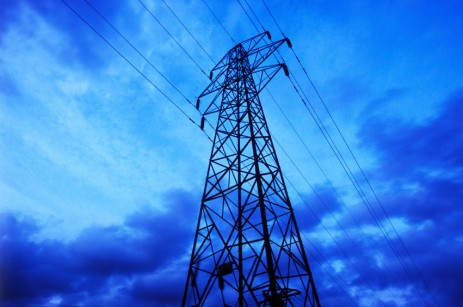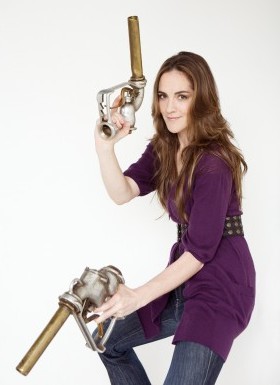 The power grid: more feeble than you think.The trouble started on an August afternoon in a remote field in northern Ohio, miles from any town large enough to be marked on a standard road atlas. The only trace of humanity hung above the trees—an electrical cable known as the Harding-Chamberlin Line, carrying 345,000 volts of power.
The power grid: more feeble than you think.The trouble started on an August afternoon in a remote field in northern Ohio, miles from any town large enough to be marked on a standard road atlas. The only trace of humanity hung above the trees—an electrical cable known as the Harding-Chamberlin Line, carrying 345,000 volts of power.
By 3:00 the air temperature had risen to 90 degrees, and the cable itself had reached nearly 200 degrees Fahrenheit—roughly twice its average temperature. The aluminum core of the 3-inch-thick wire was expanding with the heat and beginning to sag.
Five hundred miles due east of that meadow I was sitting at my desk in New York City when, at 4:09 p.m., my computer suddenly shut down. The lights, music, and air-conditioning died. I heard a strange lurching sound as the elevator in my building froze with passengers trapped on board. I rushed to the window along with my officemates and was amazed to see traffic snarling to a halt up the entire length of Broadway as street signals went black. The Verizon landlines were dead and our cell phones had no signals. We hurried down eleven flights of stairs, into streets already thickening with crowds of evacuees. Storefronts, groceries, and cafés were darkened. Subway stations were emptying of travelers as word spread that the trains had no power and hundreds of people were stuck underground. It was 2003, and like most New Yorkers, we initially jumped to the same conclusion—another terrorist attack.
What had in fact happened to us, and to a majority of the residents of the metropolitan areas of New York, Newark, Baltimore, Cleveland, Detroit, and Toronto, was a blackout—larger than any other blackout in recorded history. One of the greatest achievements in industrial engineering, the 93,600 miles of electrical cable known as the Eastern Interconnection, had been brought to its knees. All because of unseen events in that distant Ohio meadow where an overloaded wire had drooped into high tree branches and short-circuited, triggering a massive cascade effect throughout the aging power grid.
As night fell, I walked up to Times Square to see its flashing billboards snuffed out, leaving the commercial El Dorado quaint and sheepish. I passed the main post office building and Bryant Park, where thousands of stranded commuters were sprawled in a mass slumber party, using their suit jackets and briefcases as pillows. Candlelight flickered in apartment windows, and I looked up past the walls of darkened buildings at a sky so brilliant with stars I could make out the soft haze of the Milky Way and the faint pulses of orbiting satellites.
Before-and-after satellite images of the event tell the story. In the before picture there is a thick streak of foamy white across the northeastern portion of the United States and southeastern Canada. In the after is just a scattering of faint droplets, the rest absorbed into the blackness of space. Fifty million Americans were without power.
*
 Little finds it’s tough to break that addiction.Up to that point, I had spent most of my brief career as a journalist trying to gain a better understanding of the causes of just such events—an understanding of the strengths and vulnerabilities of America’s energy landscape.
Little finds it’s tough to break that addiction.Up to that point, I had spent most of my brief career as a journalist trying to gain a better understanding of the causes of just such events—an understanding of the strengths and vulnerabilities of America’s energy landscape.
Fancying myself an amateur gumshoe, I had traveled throughout the country, from Ashland, Ore., to Tampa Bay, Fla., to write about the architects and early adopters of emerging energy technologies that could provide alternatives to fossil fuels: solar, wind, geothermal, biofuels, and hybrid-electric cars such as the Toyota Prius. I began studying and writing about the legislation that was being drafted (and blocked) to push these innovations into the mainstream. I began criticizing the federal government’s failure to take action on climate change and its unwillingness to encourage the development of clean, efficient, next-generation energy technologies.
But when the August 2003 blackout hit, I recognized one major blind spot in my understanding of energy. Nothing I’d learned in my reporting had quite prepared me for the feeling of utter helplessness and paralysis that a blackout of that scale would cause. It was the first time, for me and for millions of Americans, that the story of energy was conveyed in human terms. Here I was crisscrossing the country, chasing after innovators and wagging fingers at the government, but I’d completely neglected to examine the role of energy in my own life.
So one morning I took a small, quiet, but personally momentous tour around my office. My aim was to count the things in my midst that were, in one way or another, tied to fossil fuels.
Since nearly all plastics, polymers, inks, paints, fertilizers, and pesticides are made from petrochemicals, and all products are delivered to market by trucks, trains, ships, and airplanes, there was virtually nothing in my office—my body included—that wasn’t there because of fossil fuels.
There I sat at a desk made of Formica (a plastic), wearing a sweatshirt made of fleece (a polymer) over yoga pants made from Lycra (ditto), sipping coffee shipped from Zimbabwe, eating an apple trucked from Washington, surrounded by walls covered with oil-derived paints, jotting notes in petroleum-derived ink, typing words on a petrochemical keyboard into a computer powered by coal plants. Even the supposedly guilt-free whole-grain cereal I had for breakfast and the veggie burger I ate for lunch came from crops treated with oil-derived fertilizers. My purse yielded another trove of specimens: capsules of Extra-Strength Tylenol made from acetaminophen (a substance, like many commercial pain relievers, that is refined from petroleum); glossy magazines and a packet of photographs printed with petrochemicals; mascara, lip balm, eyeliner, and perfume that, like most cosmetics, have key components derived from oil.
I had understood this intellectually before—that the energy landscape encompasses not just oil fields, coal mines, gas stations, and the vast network of copper wires that feeds electricity to our homes and offices. It’s also the cornfields in America’s heartland, the battlefields of Iraq, and the medical labs that produce penicillin, Novocain, chemotherapy drugs, and many other treatments and cures. It’s the cosmetics shelves and magazine racks in our drugstores. It’s the constantly humming, behind-the-scenes network of ships, planes, trains, and trucks that transport products to our store shelves. It’s even our own bodies, which we routinely drape in synthetic fabrics like spandex and nylon, and feed with crops that were fertilized by fossil fuels, and stitch up with plastic sutures.
Once I connected the dots between so many seemingly disparate elements of my life—my car, my clothes, my email, my makeup, my burger, even my health—I saw an energy landscape far more vast and complex than I’d ever imagined. I realized also that this thing I’d thought was a bad word—oil—was actually the source of many creature comforts I use and love, and many survival tools I need.
But if fossil fuels are a part of everything we do, how do we go about removing them from the picture? How can we kick America’s addiction to fossil fuels, given its sheer magnitude?
The father of a friend of mine who is now a successful businessman defined his approach to problem-solving in terms he learned through painful experience as a boy growing up on a farm in Ohio: When a cow gets stuck in a ditch, first, you have to get the cow out of the ditch. Second, you have to figure out how the cow got into the ditch. Third, you have to figure out how to stop the cow from getting into the ditch in the future. I want, like a majority of Americans today, to get myself out of the ditch of fossil-fuel dependence. But to do it right, I—and we—need to understand the roots of the problem, to understand how, during the 20th century, fossil fuels became so thoroughly woven into the fabric of our lives.
The story of America is, in sum, the story of a power trip; to understand it, I had to go on my own. In January 2007, I set out to explore the most extreme frontiers of our energy landscape—from its deepest wells to its tallest towers. I wanted to pull at the threads of connection between fossil fuels and everyday American life and see what places they led me to, however odd or unexpected. They led me, as it turned out, to some very strange spots, from deep-sea oil rigs to Kansas cornfields, NASCAR tracks to dank city manholes, Pentagon offices to my local produce aisle.
My goal as I describe this journey is not to cast judgment on what has gone wrong in America’s energy landscape—as I have said, I’m guilty myself of buying into and even relishing it. Instead, I want simply to understand this landscape, and to celebrate its successes for all their unintended consequences. It was, after all, American ingenuity that led us down the path of fossil fuel dependence.
And it’s that same ingenuity that can change our future course and lead us to an actual, factual “green” future free from fossil fuels.
This piece was excerpted from Amanda Little’s book Power Trip: From Oil Wells to Solar Cells—Our Ride to the Renewable Future.



